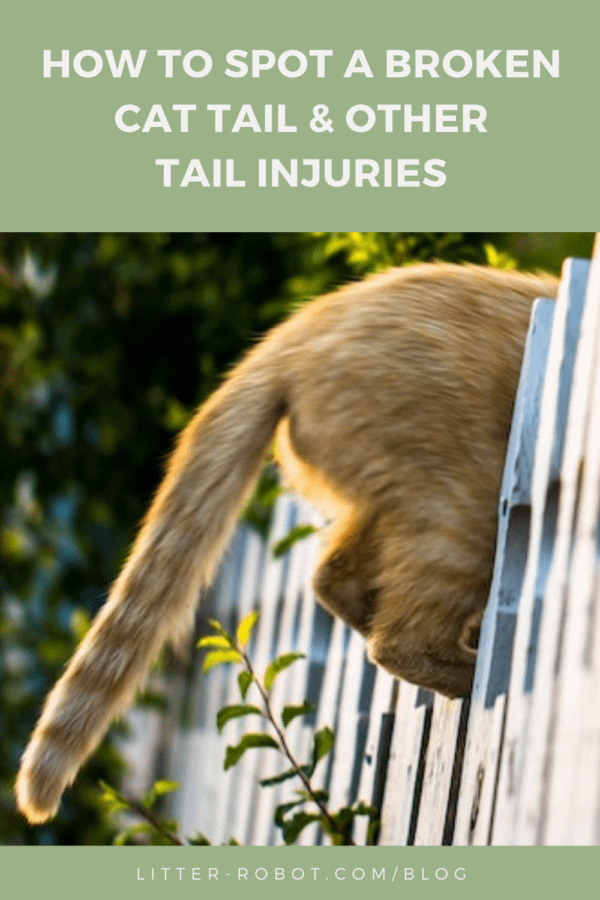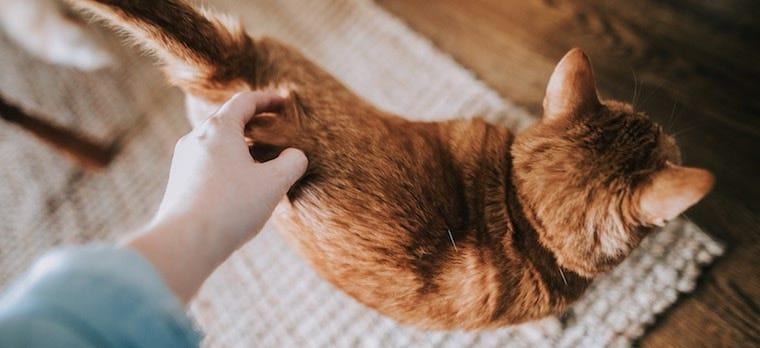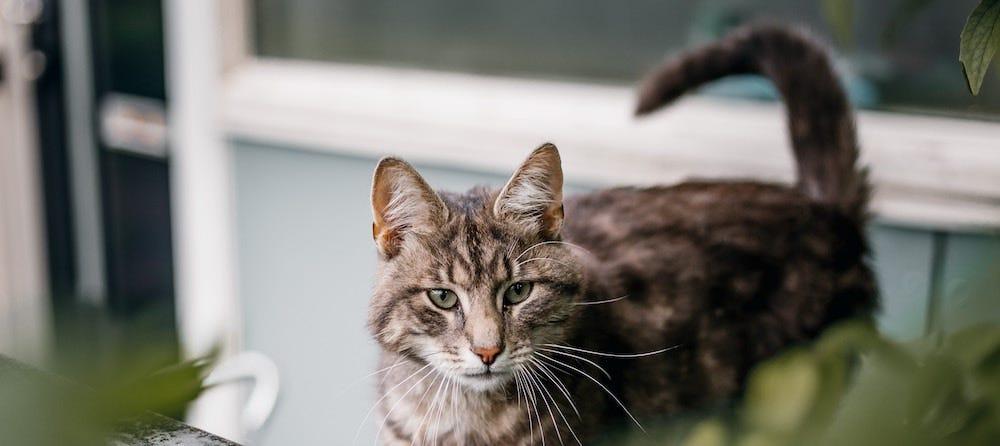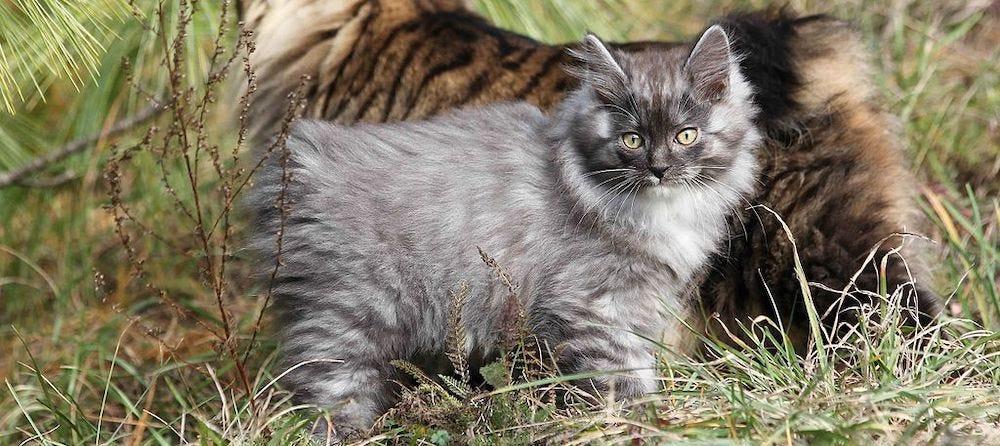As pet parents, we sometimes take the behavior of our cats’ curious appendage, the tail, for granted. For instance, while we’ll quickly notice if our cat is limping, we don’t necessarily notice when something is wrong with their tail. Learn how to recognize a broken cat tail and other common cat tail injuries.
Do cats have bones in their tails?
Yes, cats have bones in their tails—in fact, about 10 percent of your cat’s bones are in the tail. The tail is an extension of the spine, so these bones are vertebrae. Bones, muscles, cartilage, and nerves in the tail play an important role in your cat’s movement, balance, bowel control, and more. On a different note, your cat’s tail language is an essential form of expression with humans and other animals.
What does a broken cat tail look like?
Can cats break their tails? Since cats have bones in their tails, it stands to reason that they can fracture them. A broken cat tail can result from numerous incidents, from life-threatening occurrences like getting hit by a car to innocuous events like falling off of a bed. You might also see a broken cat tail because the tail got shut in a door, or was pulled too hard by a rowdy child. (Ouch!)
So, how do you spot a broken cat tail?
A broken tail could look as simple as your cat’s tail drooping down. A tail that is limp or hanging low to the ground can be a sign that your cat is pained, fearful, or both.
Additional symptoms that accompany a broken cat tail may include:
- Inability to wag the tail
- Inability to move the back legs
- Loss of bladder or bowel control
- Increased vocalization or hiding
Get to a veterinarian right away if you notice any of these symptoms in your cat.
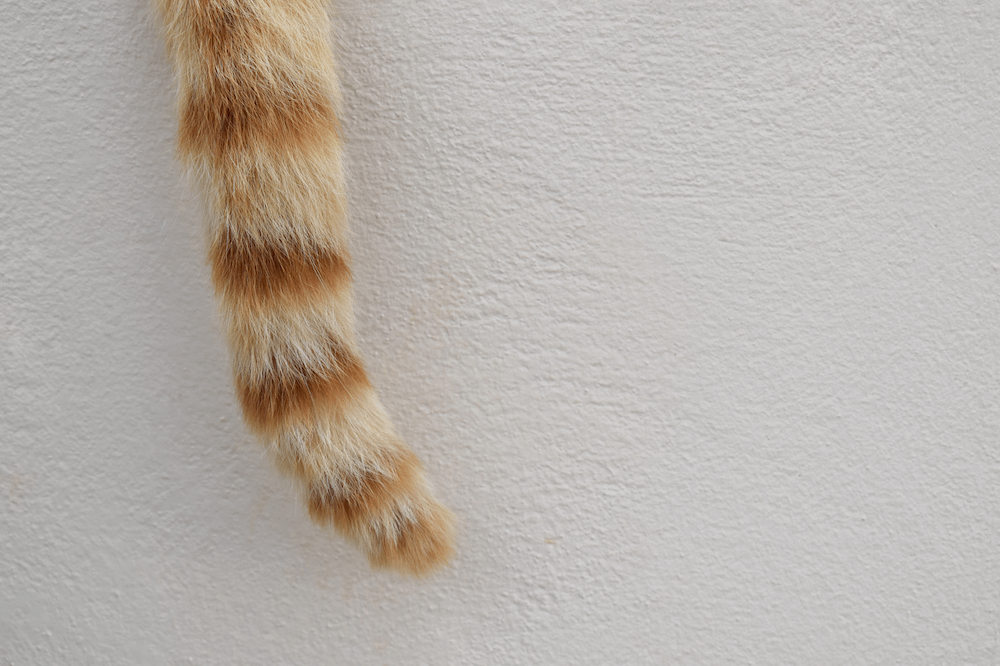
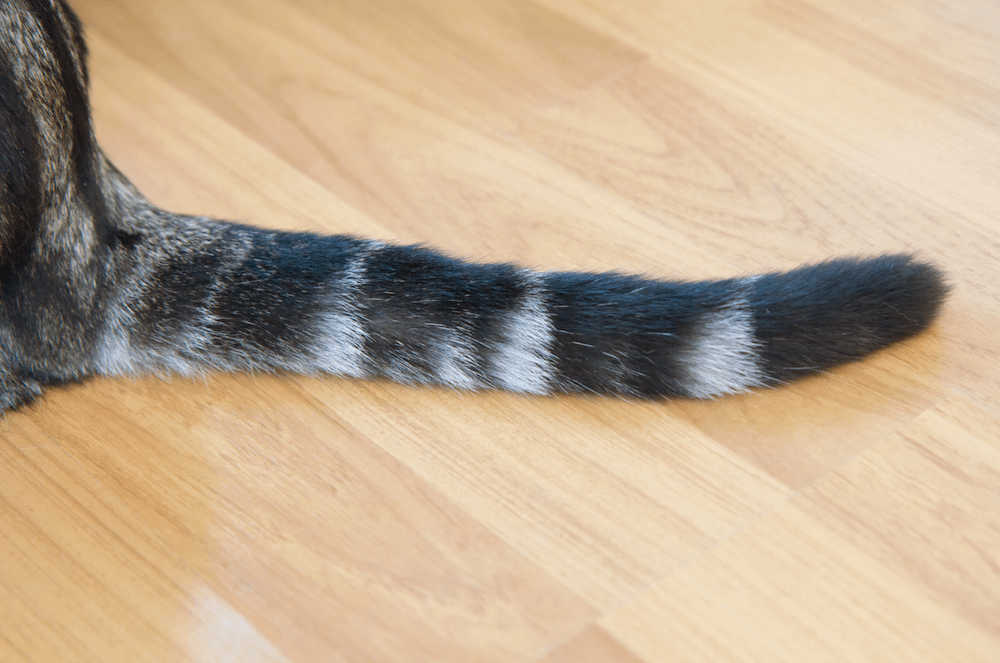
Treatment for a broken cat tail
Depending on where the fracture occurred, many tails heal on their own within a few months. A broken tail tip may be crooked with a kink or a bump in it afterward, but won’t require additional treatment. Fractures located closer to the base of the tail are usually more serious, resulting in nerve damage. Finally, crushed vertebrae or degloving—when the skin is peeled away from the tissue, bones, etc.—will likely require surgical repair. Depending on the severity and location of the injury, the tail may need to be amputated. In some cases, the damage may be beyond repair and humane euthanasia must be considered. The vast majority of tail injuries tend to be mild, but your vet will determine if this is necessary with an exam and X-rays.
The good news: Even if your cat’s tail must be amputated, he or she isn’t likely to be all that affected by the partial loss of this appendage. (After all, bobtail cats do just fine with short tails!)

Other common cat tail injuries
If your cat goes outside, tail injuries will become more likely. In addition to the hazards posed by traffic and exposure, your cat may come in contact with other animals and pests that can cause cat tail injuries. We recommend having a cat first aid kit in the house with bandages, tools, pest care, wound care, medications, and more.
Abrasions
Scrapes and scratches on your cat’s tail usually don’t warrant aggressive care. The gold standard recommendation is always to schedule an appointment with your veterinarian to have them take a look because what appears minor to you could be major to them. Additionally, scrapes and scratches can introduce foreign material into the body, subjecting your cat to infection.
If you see a minor abrasion where hair is rubbed off and red skin is exposed, just clean the area with a sterile saline wound wash. (Do NOT use hydrogen peroxide.) Then apply vet-approved antibiotic ointment (do NOT use Neosporin without consulting with your veterinarian) and an e-collar. Because scrapes and abrasions tend to hurt or be irritating, it is not unreasonable for your cat to try to lick it. This can introduce bacteria from your cat’s mouth into the wound and cause infection. If you notice your cat licking, scratching, or biting the injured area, please put them in a cat e-collar.
Any abrasion that has excessive swelling or bleeding is best checked out by your veterinarian.
Bite wounds
One of the most common cat tail injuries is a bite wound, whether caused by another animal or self-inflicted. In the case of the latter, flea dermatitis, food allergies, or stress are likely the cause.
Bite wounds on the tail can easily become infected—be on the lookout for signs like redness, heat, pain, and inflammation. It’s better to err on the side of safety and take your cat to the vet if you notice bite wounds on the tail (or elsewhere on the body). If the wound is bleeding heavily, wrap it in a towel while you transport your cat to the vet. The vet may need to flush out the wound, apply sutures, or even perform surgery. At-home treatment may include antibiotics and pain medication.
Self-mutilation
We already mentioned that bite wounds on the tail can sometimes be self-inflicted, often due to skin disorders such as flea infestations, fungal infections, or mite infestations. These sorts of infections are treated with vet-approved topical medications, shampoos, injections, and more.

Less common are self-inflicted cat tail injuries caused by a disorder called feline hyperesthesia syndrome (FHS), also known as twitch-skin syndrome, rippling skin disease, or rolling skin syndrome. Veterinarians usually characterize FHS as a seizure disorder or an obsessive-compulsive condition. Most episodes begin when you touch or scratch the cat’s lower back region. Your cat may go from dozing peacefully to scratching, biting, or licking at their back, flank area, or tail all in the space of 20 or 30 seconds. FHS can be difficult to diagnose, but it can be treated with anti-seizure medication like gabapentin and/or anti-anxiety medication like Prozac.
Cat tail injuries are more common than you’d think. While some injuries are minor and will heal on their own, many require the attention of a vet. Now that you know how to spot a broken cat tail, you can act right away when you notice something is off about your furry family member.
Embrace a better life with cats with a self-cleaning litter box.
Source:
- First Aid for Tail Injuries in Cats
- Tail-Pull Injuries in the Cat - Diagnosis, Treatment, and Prognosis
- Hyperesthesia Syndrome
